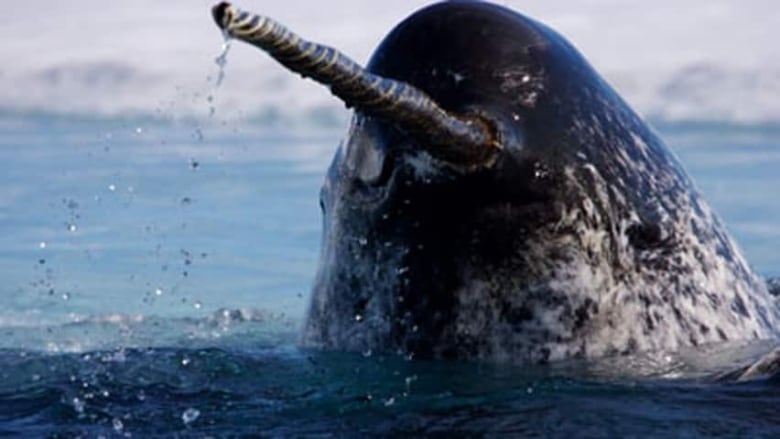Narwhals: the 'giant unicorn of the sea' at risk from climate change
The Arctic species faces challenges as the climate changes

Narwhals the Arctic dwelling, sabre-tuskedwhales of the North number in the tens of thousands.
But with a rapidly changing Arctic climate, they face significant challenges.
Clint Wright is the vice president and general manager at the Vancouver Aquarium, and before he headed tothe Arctic to study and tag the unique whales, he spoke to The Early Edition's Rick Cluff.
"They are just absolutely amazing animals," he said."It's a giant unicorn of the sea."
For the seventh year in a row, Wright has joined a team of researchers to tag and study the whale.
One of their research interests is to try and determine what the purpose of a narwhal "tusk" a long, erupted canine tooth is.
"Many people in past have thought it was used for fighting, that it was used for a weapon, but it doesn't seem to be the case."

Instead, Wright said their sabre is a covered in microtubules which are connected to nerve tissue inside.
"We seem to believe, at this point, that it's really helping them perhaps in navigation as they're able to detect salinity changes as the ice starts to form."
At the frontline of climate change
For species like narwhals, the changing climate in the Arctic means that typical behavioural patterns are difficult to maintain.
For example, Wright says, sudden changes in temperature can shift the way that ice forms.
"Just a few years ago, several hundred narwhals were trapped and died in the ice," he said. "They couldn't swim far enough under the ice to reach a new breathing hole, so basically the ice got smaller and smaller and smaller."

With a warming climate, narwhals are susceptible to diseases that are brought in from southern climates.
"Some of those can have some pretty catastrophic effects on animals. In recent years, we saw diseases from cats being found in the Western Arctic," he explained.
Narwhals are not an endangered species at the moment, he said, and there are nearly 80,000 to 100,000 narwhals in the wild.
"The Arctic is one of our national treasures ... when you talk to the locals, to the elders, you know that things truly are changing there, and I don't think for the better."
With files from The Early Edition.
To listen to the interview, click on the link labelled: Narwhals: the 'giant unicorn of the sea'.












_(720p).jpg)


 OFFICIAL HD MUSIC VIDEO.jpg)
.jpg)



























































































